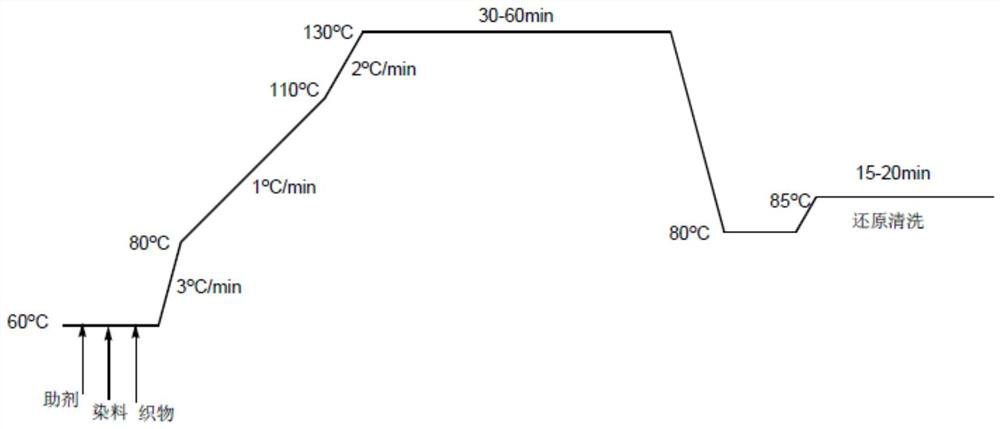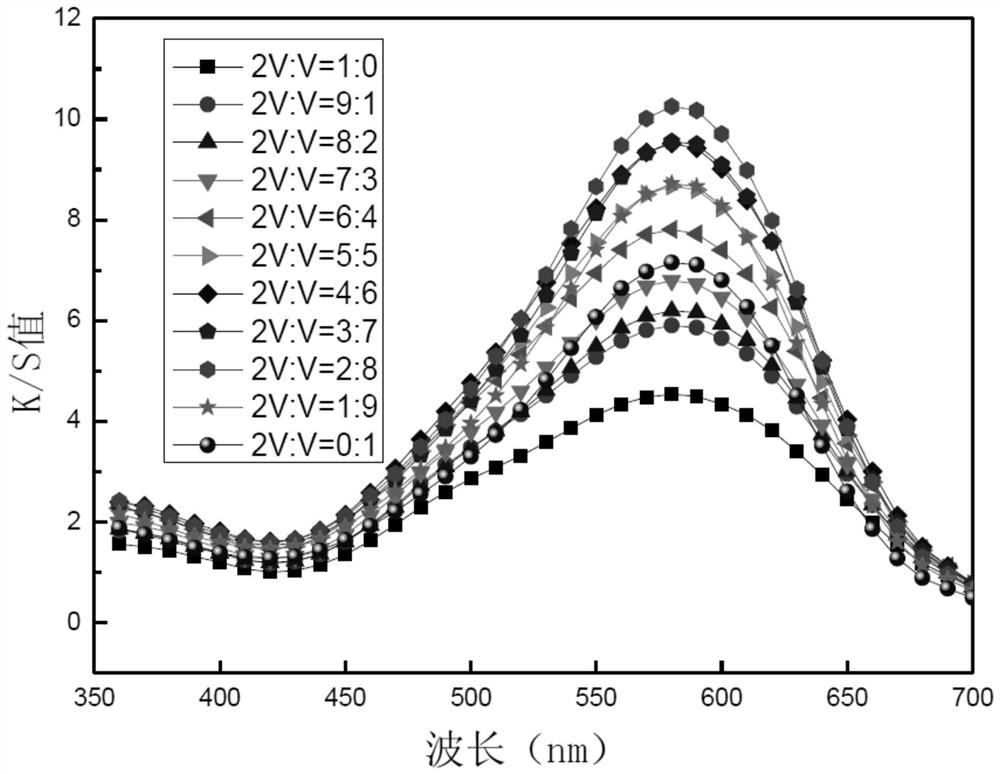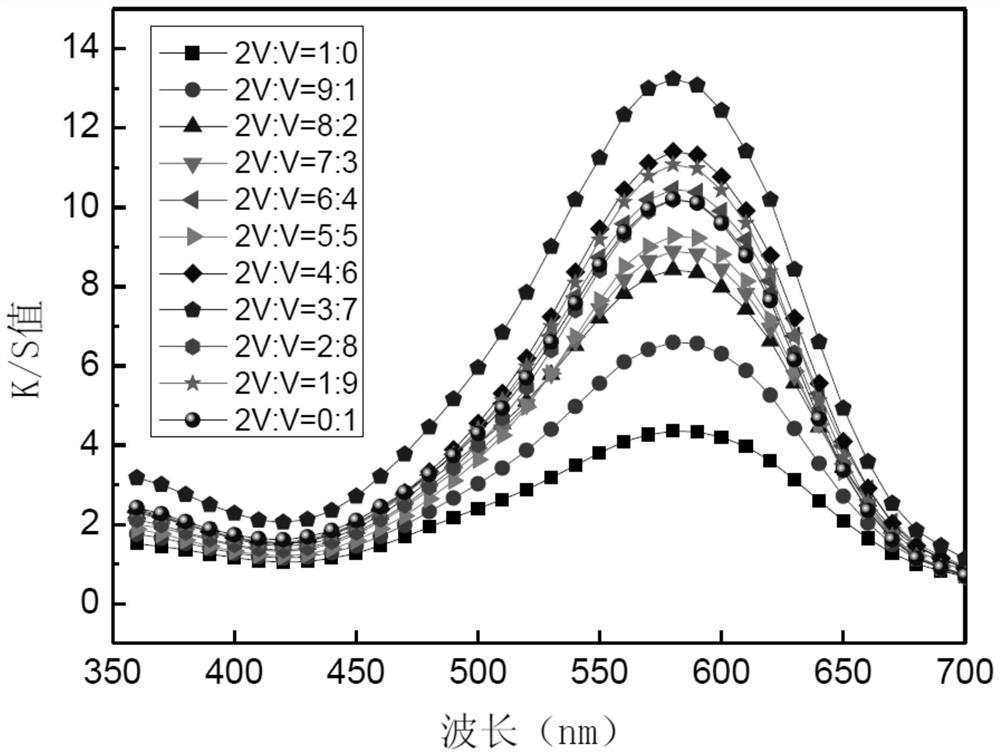Blue coupling type disperse dye compound and application thereof
A technology of disperse dyes and compounds, applied in organic dyes, dyeing methods, textiles and papermaking, etc., can solve the problems of difficulty in diffusion, low dyeing rate, and failure to achieve results.
- Summary
- Abstract
- Description
- Claims
- Application Information
AI Technical Summary
Problems solved by technology
Method used
Image
Examples
Embodiment 1
[0032] Embodiment 1: the impact of compounding in different proportions on dyeing
[0033] Two blue coupled disperse dyes are mixed and used, and different mass ratios are changed to dye suede fabrics. The total dye concentration is 2% (o.w.f), the dyeing assistant concentration is 1g / L, and the ammonium sulfate is 1g / L, the liquor ratio is 30:1. After the dyeing solution is prepared, start dyeing at 60°C, first raise the temperature to 80°C at a rate of 3°C / min, adjust to 1°C / min and raise the temperature to 110°C, then raise the temperature to 130°C at 2°C / min, keep warm for 30 minutes and After 60 minutes, cool down to 80°C and drain water, then inject water and raise the temperature to 85°C for reduction cleaning for 15 minutes, after washing twice, drain the cloth and dry it. The apparent color depth values of the dyed samples at different wavelengths were measured separately, and the absorption spectrum curves (λ~K / S) of the dyed samples with different mass ratios we...
Embodiment 2
[0045] Embodiment 2: the influence of different dyeing processes on the dyeing effect
[0046] Dye with the above-mentioned best compound (disperse blue HF-2V: disperse blue HF-V mass ratio of 3:7 or 2:8) as the dye, and conduct experiments on the confirmation process of each parameter of the dyeing process, as follows:
[0047] When the dye compound concentration is 2% (o.w.f), change the concentration of dispersant MF, ranging from 0-2.5g / L, and the concentration of dyeing assistant (the mass ratio of hyperdispersant Solsperse20000 to penetrant AEP is 4:6) is 1g / L, ammonium sulfate 1g / L, bath ratio is 30:1, dyeing temperature rise control is the same as embodiment 1, and is incubated 60min. After dyeing, the apparent color depth values of the dyed samples at the maximum absorption wavelength were measured respectively, and the obtained results are shown in Figure 4 shown.
[0048] From Figure 4 It can be seen that when the amount of dispersant is 0-2g / L, the K / S valu...
PUM
 Login to View More
Login to View More Abstract
Description
Claims
Application Information
 Login to View More
Login to View More - R&D
- Intellectual Property
- Life Sciences
- Materials
- Tech Scout
- Unparalleled Data Quality
- Higher Quality Content
- 60% Fewer Hallucinations
Browse by: Latest US Patents, China's latest patents, Technical Efficacy Thesaurus, Application Domain, Technology Topic, Popular Technical Reports.
© 2025 PatSnap. All rights reserved.Legal|Privacy policy|Modern Slavery Act Transparency Statement|Sitemap|About US| Contact US: help@patsnap.com



